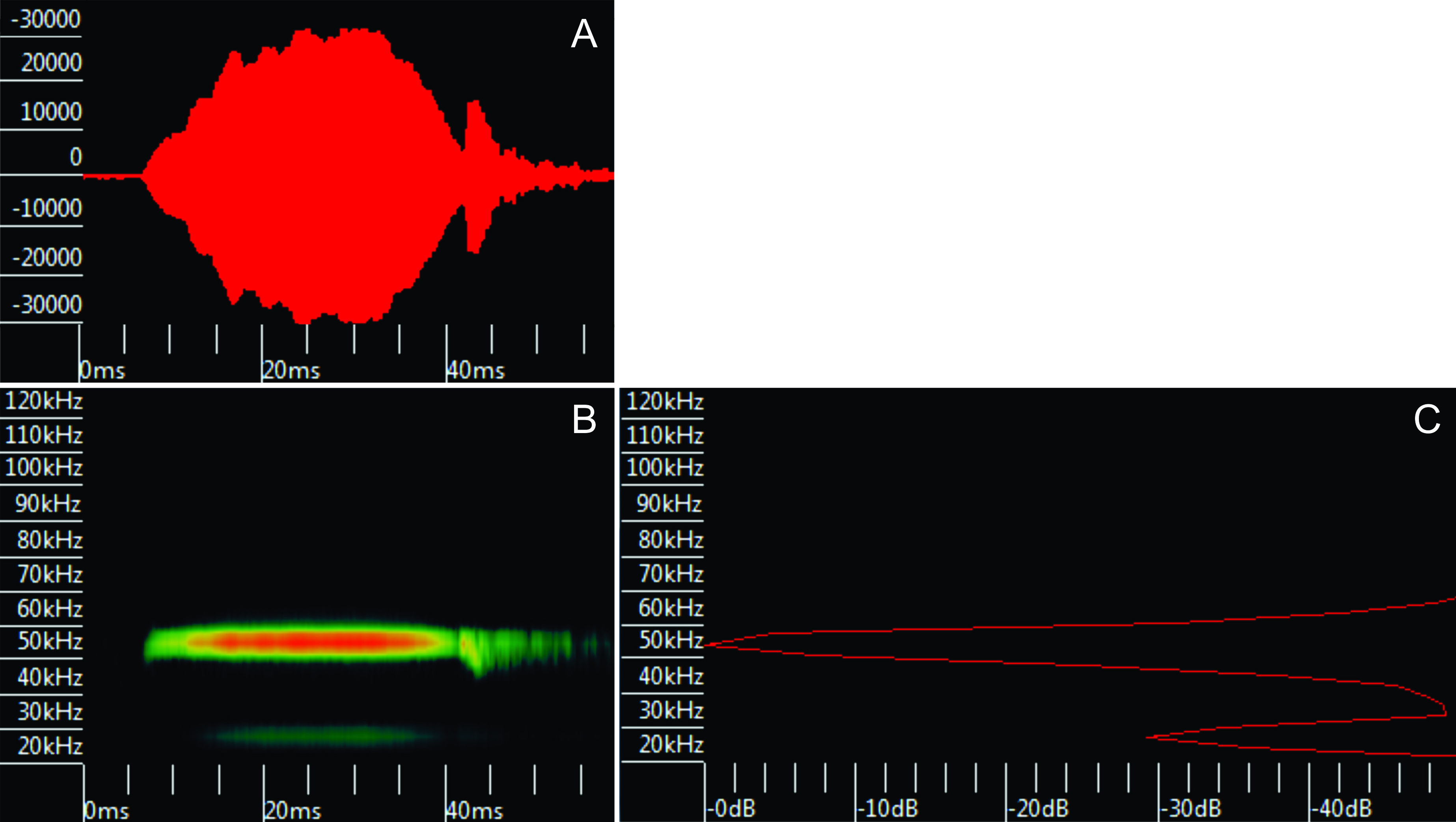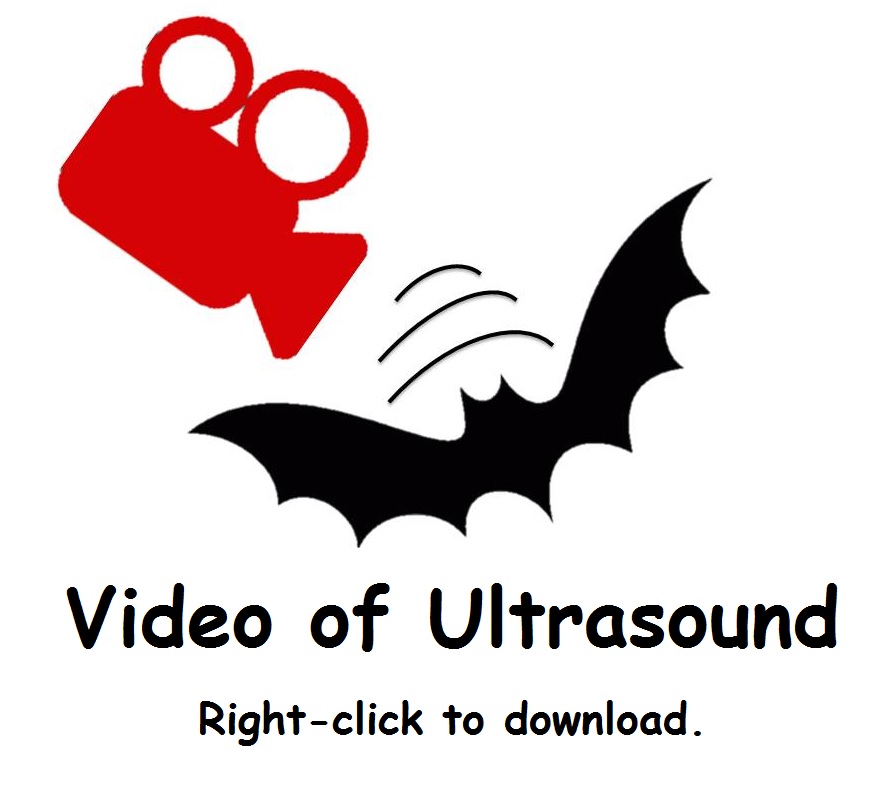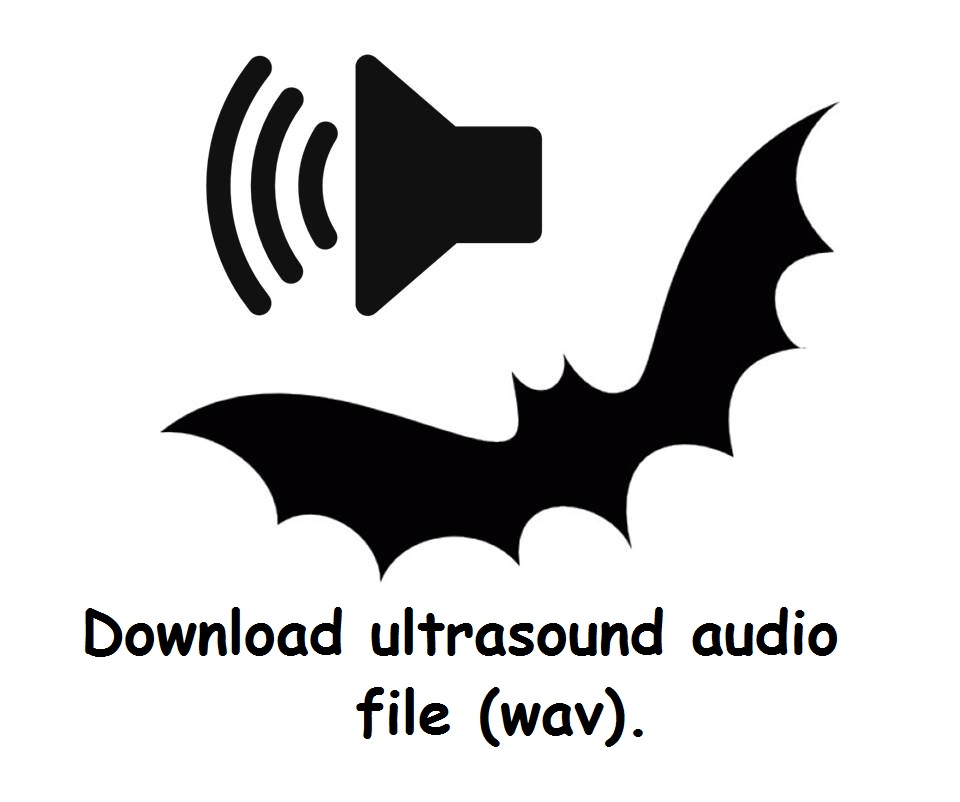Languages
Pteronotus rubiginosus

Pteronotus rubiginosus
One of the largest species of the genus. Adults have 7 cm body length, 6 cm forearm and 20 g weight. They have a coloration ranging from black to light brown, and may be orange-brown with a belly that is paler than the back. Bats of this species mainly use caves as shelter and the colonies are quite numerous, where they can co-occur with other species of bats of the families Mormoopidae and Phyllostomidae.
They are found in different preserved and anthropized habitats, humid tropical forests and arid forests. They forage in more closed areas of the forest and eat mainly Lepidoptera and Coleoptera. The echolocation pulses have a constant frequency of 55 kHz. They are the only bats of the Neotropics to determine the distance and position of the prey and obstacles in the midst of vegetation by Doppler effect.
Its distribution includes Mexico, Central America, Greater Antilles and north-central South America.
Figure 1. Echolocation call for Pteronotus rubiginosus. A) Acoustic pulse oscillogram; B) Call spectrogram; C) Intensity spectrogram.
Obs. As this species changed from Pteronotus parnellii to P. rubiginosus, the old nomenclature is written in the video but it is Pteronotus rubiginosus
(Click figure to enlarge)





